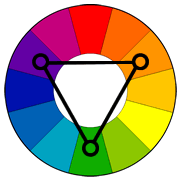
Plein Air E Mail 에 미국의 Karen Margulis 란 화가의 글이 있어 옮긴다.
구도 및 칼라를 참고하기 위해 옮긴다 ( 이 화가의 그림은 대부분 파스텔화)
( 영어 원문은 맨 뒤, 번역은 구글 번역 )
====================================================
Karen Magulis 의 야생화 그림 팁으로 풍경을 압도하지 않고 야생을 포용하세요.
예술 여정 초기에는 야생화를 그리는 것을 피했습니다. 풍경이 너무 달콤하거나
너무 예뻐질까 봐 두려웠기 때문입니다. 하지만 뮤즈가 계속 나를 불렀고,
마침내 진실을 받아들이고 상상력을 사로잡은 야생의 풀과 야생화 덩굴을 보여주기로 했습니다.

야생화는 생존자입니다. 가장 예상치 못한 곳에 나타나고 종종 간과됩니다.
저는 다른 사람들에게 아름다움이 어디에나 있다는 것을 보여주고 싶습니다.
심지어 잡초가 있는 곳에서도 말입니다.
야생화와 풀은 풍경에 매콤함과 흥미를 더하지만, 지나칠 수도 있습니다.
성공의 열쇠는 자제력입니다. 매콤함이 너무 많으면 요리가 망가질 수 있듯이,
너무 많은 세부적인 꽃과 풀은 그림을 압도할 수 있습니다. 물방울 무늬 꽃이나
풀 울타리의 효과를 피하기 위해, 저는 몇 가지 형태를 제안하고
나머지는 보는 사람이 채우도록 합니다.

이러한 주제에 대한 표현적인 접근 방식을 위해 저는 파스텔이라는 적절한 도구를 가지고 있습니다.
이 매체의 다양성, 생동감, 광채는 야외에서 그림을 그리는 데 완벽한 선택입니다.
다양한 모양과 부드러움의 스틱을 사용하여 풍경에 깊이를 더하기 위해
복잡한 레이어를 여러 개 쌓아가면서 넓은 표시나 선형 표시를 그릴 수 있습니다.
저는 간단한 모양으로 시작하여 점차적으로 세부 사항을 추가합니다. 야생화는 케이크에 장식을 더합니다.
야생화와 풀을 그리기 위한 7가지 팁
1. 넓은 풀밭은 평평하고 지루해 보이지 않도록 조정이 필요합니다.
흥미로운 시각적 연결로 시청자를 이끌기 위해 대비와 암시적 경로를 사용하는 것이 중요합니다.
2. 흙, 즉 기본적인 어두운 모양부터 시작합니다. 이 어두운 부분 위에 페인트를
칠하면 풀과 꽃이 떠다니는 것을 방지할 수 있습니다.
3. 몇 가지 세부 사항을 제안하고 시청자가 나머지를 채우도록 합니다.
모든 꽃과 풀잎을 칠할 필요는 없습니다.
4. 모든 표시에는 목적이 필요합니다. 야생화와 풀을 놓을 위치를 계획하여
시청자가 그림을 따라가도록 합니다.
5. 들판의 야생화를 점들의 집합이 아닌 한 모양의 덩어리로 생각합니다.
색상 패턴을 만듭니다. 덩어리 안과 가장자리에 몇 개의 자세한 꽃을 그립니다.
6. 야생화를 알고 있어야 합니다. 모양, 크기, 색상은 무엇인가요?
그리는 꽃의 종류를 암시하는 표시를 합니다.
7. 꽃을 재배치하여 더 강력한 구성을 만들 수 있는 예술적 자유가 있습니다.




















Embrace the wild without overpowering your landscapes with Karen Margulis’s tips on painting wildflowers.
Early in my art journey, I avoided painting wildflowers. I was afraid they would make my landscapes too sweet or too pretty. But the muse kept calling me, until finally I embraced my truth and chose to showcase the wild tangles of grasses and wildflowers that captured my imagination.
Wildflowers are survivors. They appear in the most unexpected places and often go overlooked. I want others to see that beauty is everywhere, even in a patch of weeds.
Wildflowers and grasses add spice and interest to a landscape, but they can be overdone. The key to success is restraint. Just as too much spice can spoil a dish, too many detailed flowers and grasses can overpower a painting. To avoid the effects of polka dot flowers or grass fences, I simply suggest a few forms and let the viewer fill in the rest.
For the expressive approach I take to these subjects, I have just the right tool — pastels. The versatility, vibrancy, and luminosity of the medium makes it the perfect choice for painting en plein air. With sticks in a variety of shapes and degrees of softness, I can paint broad marks or linear ones as I build up many complex layers to add depth to my landscapes. I begin with simple shapes and gradually add details. The wildflowers provide the icing on the cake.
- Large areas of grass need orchestration to keep them from looking flat and boring. It’s important to use contrast and implied pathways to lead the viewer with interesting visual connections.
- Start with the dirt — the underlying dark shapes. Painting over these darks will prevent the grasses and flowers from floating.
- Suggest a few details and let the viewer fill in the rest. There’s no need to paint every flower and blade of grass.
- Every mark needs a purpose. Plan where you will place your wildflowers and grasses to lead the viewer through the painting.
- Think of wildflowers in fields as a mass of one shape, not a collection of dots. Create patterns of color. Paint a few detailed flowers within the mass and at the edges.
- Know your wildflowers. What are their shapes, sizes, and colors? Make marks that will suggest the type of flower you’re painting.
- You have artistic license to rearrange flowers to make stronger compositions.
'그림공부' 카테고리의 다른 글
| ( 그림 공부 ) 수채화로 물을 그리는 방법 (2) | 2025.04.25 |
|---|---|
| ( 그림공부 ) 인물화 그리는 방법에 대해서 (0) | 2025.04.03 |
| ( 그림공부 ) 매력적인 정물화를 위한 7 가지 조언 (0) | 2025.02.12 |
| ( 그림공부 ) 과슈( Gouache) 는 어떤 물감인가 (2) | 2025.02.05 |
| ( 그림공부 ) 큰 그림을 그리는 테크닉: 3가지 문제점과 해결 방법 (3) | 2025.01.25 |




